Passion from America! Restoring a Tattered Eagle Hanging Scroll

Across the globe, there are many who hold a deep appreciation for Japanese culture, dedicating themselves to the preservation of its artifacts.
This episode involves a customer from the United States who sought repair for a severely damaged hanging scroll depicting an eagle.
The customer, aiming to protect Japanese culture, decided to reach out to our company after reading an article about our previous restoration work on a tiger scroll for a client from Germany.
This is the eagle scroll we were consulted about. It was as damaged, if not more, than the tiger scroll of our German client.

The upper left part of the scroll had black stains, and parts of the artwork were torn.

There were several areas of loss already.

Overall, the scroll was in a very fragile and precarious state.

We could easily imagine that the restoration of this scroll would require significant time and effort. We thoroughly explained the costs and timeline to the customer, whose determination and enthusiasm for the project did not waver.
The customer had a clear vision for the restoration, conveying their ideal image through a mood board.
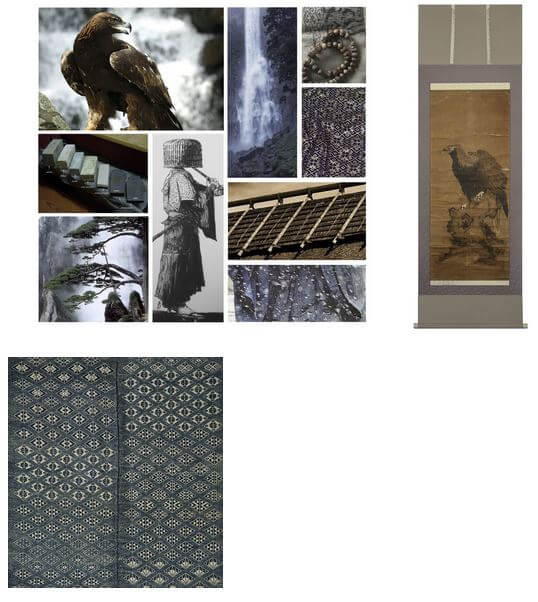
The customer’s desired image was one of “quiet strength and a sense of nature,” which guided our recommendations for the fabric and materials for the restoration.
Restoration Process
The general flow of the re-mounting operation is as follows:
Fix (Using chemicals to set the ink and paint.)
↓
Dismantling (Removing old fabric and rod.)
↓
Removing old backing papers (Peeling off the old backing papers from the back of the artwork.)
↓
Cleaning (Cleaning the main work as best as possible by using chemical agent)
↓
Hada-urauchi (Applying the first backing paper on the back of the main work)
↓
Orefuse (Reinforcing by applying long narrow Japanese papers on the back of the first backing paper)
↓
Retouching (Retouching missing parts of the artwork to make it naturally viewable.)
↓
Remounting (Remounting in kakejiku with the fabric which the customer has chosen)
This photo shows the reinforcing process. Thin Japanese papers are applied to the back of the areas where creases have occurred to strengthen them. The amount of reinforcing tells the story of the artwork’s condition.
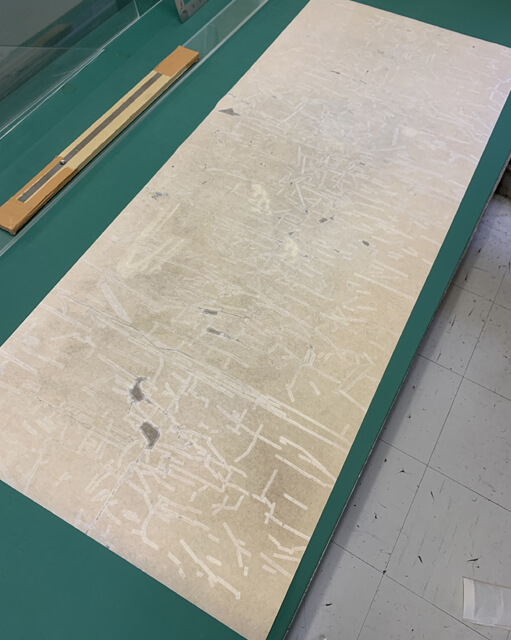
This is the state before retouching. Missing parts were obstructing the viewing of the artwork.
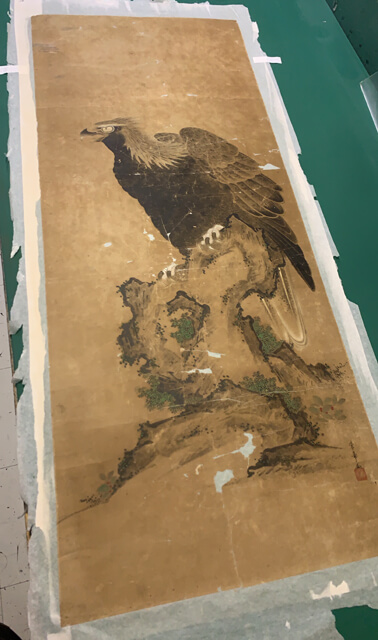
After retouching, the artwork appears uniform, allowing for seamless viewing without any discomfort.
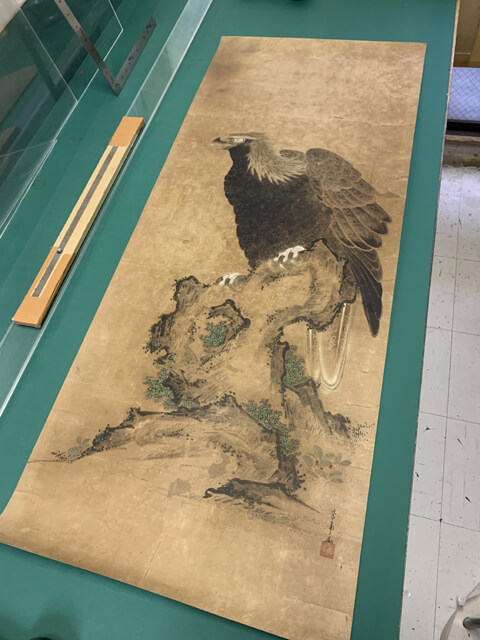
Completion of Restoration
After a long process, the restoration of the hanging scroll is finally complete.
This is the scroll after being remounted. It has been cleaned and repaired as much as possible, looking remarkably different. The depiction of the eagle seems to be brimming with strength.
Considering the future preservation of the artwork, we suggested storing it with a futomaki (roller clamp) and a double box.

At the customer’s request, we inscribed the desired characters on the box.
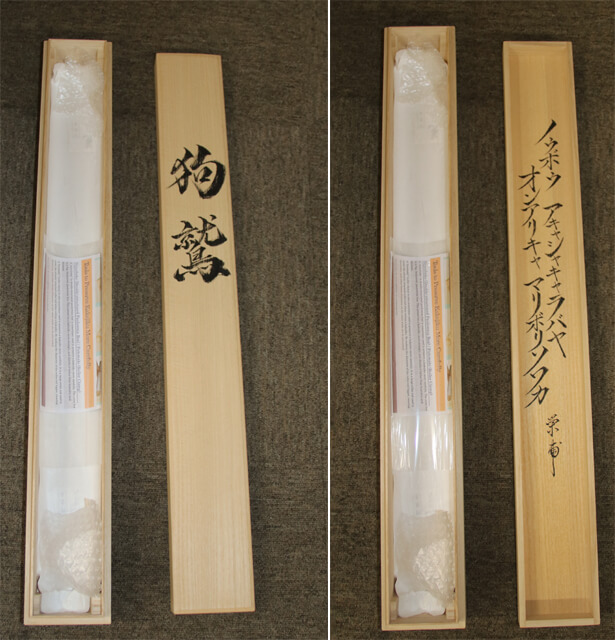
Customer Feedback
We promptly shipped the package to the customer in America.
We received this delightful message from the customer:
Dear Yuuichi,
The package arrived safely this evening. The box is wonderful, and the scroll is magnificent. We are very pleased and happy with the result 🙂 We cannot thank you enough for the restoration, and for your patience, guidance, and kindness throughout the process.
It seems that the customer is satisfied, and there is no greater joy for us than this. It is the moment when the hard work we have put into repairing and restoring over a long period of time is rewarded.
We have been reminded once again that it is not only Japanese people who wish to preserve Japanese culture but also those from abroad feel the same.
Our company welcomes consultations for repairs like this, so please feel free to contact us.



